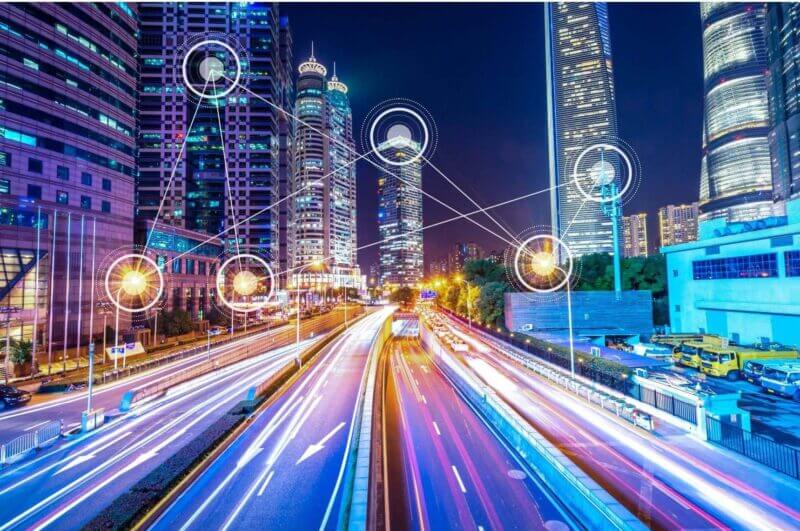During our time, a lot of us reading this article have experienced the black and white TV era merge into full-scale robotics and aquatic/space exploration. This shift, when thought of like this, seems like we are truly flying closer towards the advanced technological future we often see portrayed in various different movies. But there is a new move on the horizon, and it begins with the hub you currently live in.
Smart cities have been the hot topic for quite some time now, launching certain areas into the spotlight and for very good reasons. Not only can you predict far more problem-case events and solve them either faster or before they even arrive, but you can also future-proof certain instances from causing adverse effects.
A coastal city-scape, alerting their shore-guards of seismic activity for faster wall-erection or drain-activation, while starting to clear out traffic congestion into inland areas to act as preliminary precautionary measures to save lives.
A inland city predicting freak-weather conditions to nest public transport, warn citizens, cover crop-land, and draw-in livestock while provisioning first-responders via SMS or call etc.
The benefits are immense, the intellect behind decision making becomes expanded and far superior, and the intrinsic benefits for communities are maximised. Naturally, with everything, there is a cause and effect dilemma we all look at and scrutinise.
Below are a few pros and cons of smart cities. Lets walk through some of these that Scalexa has encountered and helped teams discuss through at length with their cost benefactors.

Innovating for Smart Cities: Reducing Waste and Carbon Emissions
A massive positive impact on overall earthly affairs.
A decrease of civilians driving to designated buildings due to remote workability, a decrease of travel emissions for markets and general services due to robotic assistance and automation, legislature on any factory outlets and ventilation, monitoring the level of quality on basic amenities with live data feeding back to teams that can react and correct these instances, and a professionally automated waste system with trucks, waste banks, and recycling being a top priority or reuse and disposal.
Smart Cities and Policy Enhancement: A Technological Revolution
Legal systems, courts, and policing stations made it far more efficient to the point that it would be unheard of to arrive at a centre and wait in a line. Robotic assistance and self-help options will get you the help you need in record time and get you out of there before the hour is up.
Empowering Equality in Smart Cities
Drones delivering bought goods at a moment’s notice to your doorstep, voting registration and inclusion made far easier by electoral networks and robust human-counting systems, food tracking to predict when food will rot etc.
Enhancing Social Cohesion in Smart Cities
A taboo topic for people who are deemed “takers”. Food stamp collectors who sit on the couch day in and day out for 15 hours a day will be put to task to benefit their local community. There will be roles and responsibilities for each and every human being in their area. This for two main reasons, inclusivity and productivity but also because an overweight unhealthy person will increase food cost in that area, increase wear and tear on public transport, increase the likelihood of emergency service needs, and increase the overall assessment on demographics for health care costs. Overall, to the 99.999% of human beings, social inclusion is extremely beneficial.
Strategic Energy Management in Smart Cities: Optimizing Consumption
A taboo topic for people who are deemed “takers”. Food stamp collectors who sit on the couch day in and day out for 15 hours a day will be put to task to benefit their local community. There will be roles and responsibilities for each and every human being in their area. This for two main reasons, inclusivity and productivity but also because an overweight unhealthy person will increase food cost in that area, increase wear and tear on public transport, increase the likelihood of emergency service needs, and increase the overall assessment on demographics for health care costs. Overall, to the 99.999% of human beings, social inclusion is extremely beneficial.
On-the-Go Excellence: Smart Changes in Transportation Networks
Transportation networks will not detect the routes suggested for emergency staff to travel, and further detect emergency lights from a distance, to alter the traffic lights and clear a way for these types of services to travel with priority.
Nurturing Growth: Specialist Job Creation in Smart Cities
This newly developed infrastructure will not be able to maintain itself (for now!). Therefore, it is up to humans to monitor and maintain the IoT networks and devices that will now be widely spread across every metre of these cities.
Ensuring Security: People Tracking in the Realm of Smart Cities
This should be placed on the “middle-list” as there could be a few who perceive this as somewhat intrusive or problematic. Each network communicates with each other. When a criminal is running down the street, you now have a live-feed of where this person is. If they change course – no problem, switch the camera to the next down that street. If they go into a home – no problem, check heat trails and temperature in that house to see if the person is still there. Moving into a rural, less populated area – no problem, switch to satellite and retrieve that same feed into your current trackers. There are some that point out the “negative” that might surprise the average Joe, which is not on the advertising leaflet.

Smart Solutions: Limiting Food Impact in Smart Cities
I’m sure there will be some kick-back on this from a few people, but overall, society needs to zoom out of the sensitivity and zoom in on the social impact. Abusing food quantity pushes less food towards people that are starving, spikes health costs, and degrades every social commodity around you. Naturally, smart cities will pick up on your health, medical expenses, and food abuse through various channels and networks, and I am sure that eventually this will be rationed or prevented in various different ways. Your network and society is only as strong as your weakest link.
Time Well Spent: Analyzing Time Restrictions in Smart Cities
If an analysis shows that there is a spike in accident or death rates after a certain period of time, there might be a decision made in the near future around curfews to assist with dropping those numbers and outcomes. Inside of this, special restrictions might cause citations, travel restrictions, or even jail time.
The Rise of Automation: Transforming Jobs in Smart Cities
Although there will be a huge influx of IoT related job openings and roles, the more mundane and rudimentary tasks like baggage packing, street sweeping, facility upkeep will be taken away from human hands and given to robots and other automated processes facilitators.
Community Involvement in Smart Cities: Encouraging Citizen Participation
This point leads many nay-sayers to believe that smart cities carry some form of communism. Enforcing participation is a brilliant idea for the overall populus, but some seem to think that level of monitoring is unfair and invasive. Statistics tend to lean towards the beneficial side, showing that if everyone works towards a common goal, massive positive changes coincide with the efforts, so we tend to believe that no matter how displeasing this may seem to the few, the rule will pass.
Balancing Act: Home Energy Consumption Analysis in Smart Cities
Calculations will conclude whether or not your home fits into an optimal energy consumption bracket, which again fits into the larger picture of what the city is trying to achieve. If you do not have specific needs like assisted living devices, or remote working in different time zones etc, there is a large chance that you will eventually need to cut the usage, or pay a larger taxed portion of extended electrical usage. Naturally this is not the most desirable outcome for people who do abuse electrical grids, but this is usually the type of decision that will be made to better societal development.
With the information and examples given above, you can make your own decision as to if this will be the right choice for you and your family. We guess that you could always move into a rural area and go off-grid, but there is obviously a barrage of adverse consequences that come into that.
Is your company or team working towards advising on a smart city project? If so, perhaps we can assist with informed ideas and practised results that we as Scalexa have rolled out over the last few years. Lets chat at sales@scalexa.com


